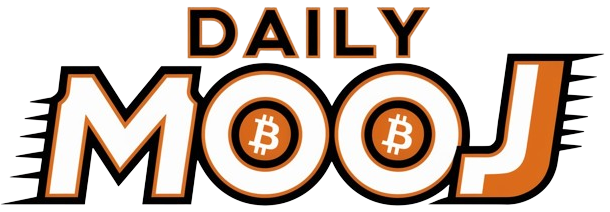Investing.com — Because the U.S. presidential race unfolds, with former President Trump on monitor to return to the White Home, main coverage shifts seem seemingly, impacting sectors like equipment and building.
Analysts at Barclays (LON:) have recognized core areas the place modifications in commerce, immigration, and regulatory insurance policies beneath a Trump administration may reshape these industries, from tariff impacts to funding challenges.
Tariffs, a key challenge in Trump’s first time period, may once more change into a central coverage device, posing potential headwinds for the equipment sector.
Corporations on this area sometimes function with world provide chains and substantial worldwide gross sales publicity, together with agricultural tools companies that rely on world gross sales markets.
Tariffs on imports, notably from main commerce companions, may pressure the equipment sector, although trade gamers are higher geared up now to go on prices in comparison with 2018.
Over the past tariff hike, equipment shares noticed declines because of investor considerations over rising operational prices, however Barclays notes that firms at present have refined pricing methods to handle value will increase.
Corporations have discovered from COVID-related provide chain disruptions and developed mechanisms like tariff surcharges to offset value pressures, which can assist them adapt extra successfully if tariffs return.
The potential for restrictive immigration insurance policies beneath a Trump presidency may pose challenges for building and manufacturing industries, the place foreign-born staff are crucial to the labor power.
As per Barclays, these sectors make use of about six million immigrant staff, lots of whom fill roles which might be at the moment troublesome to employees with home labor alone.
On condition that roughly 30% of U.S. building staff are immigrants, stricter immigration insurance policies may result in elevated labor shortages, driving up mission prices and wage inflation. Southern states, which home a bigger portion of those staff, are particularly susceptible.
If immigration constraints escalate, it may have an effect on the provision of labor for tasks in these high-growth areas, doubtlessly lowering mission feasibility or inflating prices.
Regulatory coverage shifts are additionally anticipated to have blended impacts. Trump’s previous strategy to environmental regulation included substantial rollbacks, and a second time period may see a continuation, notably in clear vitality areas.
Trump has been vocal about lowering assist for electrical autos, which may dampen federal backing for EV-related tasks, a notable space of focus beneath the Biden administration.
Corporations concerned in renewable vitality tasks, akin to wind or photo voltaic infrastructure, could face a cooling of assist, whereas fossil fuel-based initiatives may see fewer regulatory obstacles.
On a optimistic observe, Trump’s concentrate on allowing reform could assist equipment firms concerned in infrastructure tasks.
Throughout his first time period, Trump sought to ease allowing processes, and a second administration may additional scale back bureaucratic hurdles, particularly round massive building and infrastructure tasks.
For firms reliant on heavy supplies and tools leases, streamlined allowing may open up extra alternatives for brand new tasks and facilitate progress by way of mergers and acquisitions.
With Republicans poised to manage each chambers of Congress, key Biden spending initiatives may face scrutiny. Initiatives such because the Inflation Discount Act and the CHIPS Act may even see slower approval charges, and elevated oversight may affect how future stimulus {dollars} are distributed.
Barclays analysts flag the GOP’s curiosity in curbing spending, notably round discretionary tasks tied to wash vitality and know-how.
Whereas spending on these initiatives can’t be eradicated with out congressional motion, mission approvals and price range allocations could also be topic to delays and stricter oversight.
This potential shift is more likely to affect sectors reliant on public funding for tasks, together with sure equipment and building companies that had factored in stimulus-related revenues.
Buyers had anticipated a Trump victory however appear much less ready for a “red wave” state of affairs.
The fast affect on equipment shares is nuanced: whereas firms are anticipated to deal with trade-related value pressures higher this cycle, a GOP-led Congress may heighten uncertainties round stimulus-backed megaprojects in areas like electrical automobile infrastructure and battery manufacturing.
Tools rental firms, typically considered as indicators of enormous mission progress, may even see slower momentum if these tasks stall.
Sure building companies could face direct dangers from tightening immigration insurance policies that affect labor availability and mission timelines, whereas engineering companies that depend on world workforces could face fewer constraints.
The floor transportation funding inside the Infrastructure Funding and Jobs Act, nonetheless, is essentially safe till fiscal 12 months 2026, offering a buffer for firms closely tied to this sector.
Corporations like MasTec (NYSE:), which have a diversified portfolio throughout conventional vitality, communications, and energy transmission, could also be higher positioned to navigate these shifts. Equally, materials companies with much less publicity to wash vitality are anticipated to stay extra impartial to any modifications ensuing from a Trump administration.
Barclays analysts additionally level to native transportation investments authorized by voters in states like Arizona, Washington, and South Carolina, which may bolster regional building and equipment calls for.
Native initiatives to resume transportation taxes and preserve carbon credit score markets had been largely supported, and firms with robust regional ties, akin to Vulcan Supplies (NYSE:), Martin Marietta, and Arcosa (NYSE:), stand to learn.
Although federal clear vitality funding would possibly face obstacles, these state-level selections sign a gradual demand for building supplies and tools in particular markets, particularly within the western and southern U.S.

